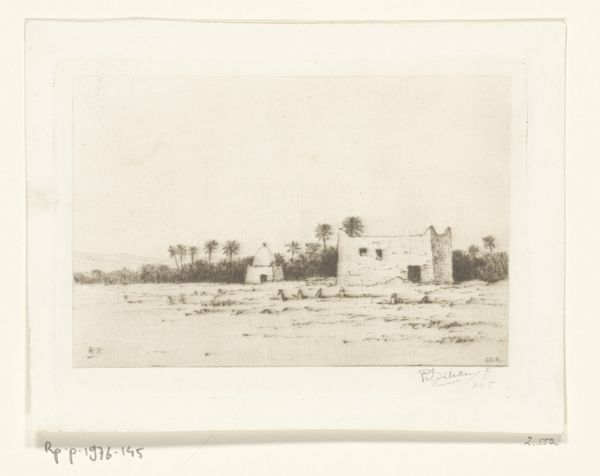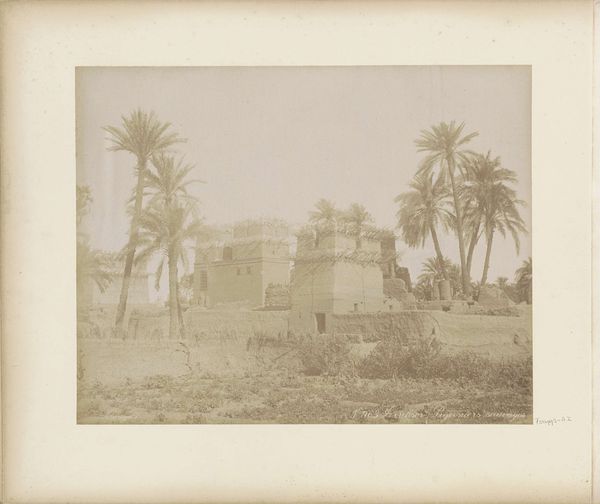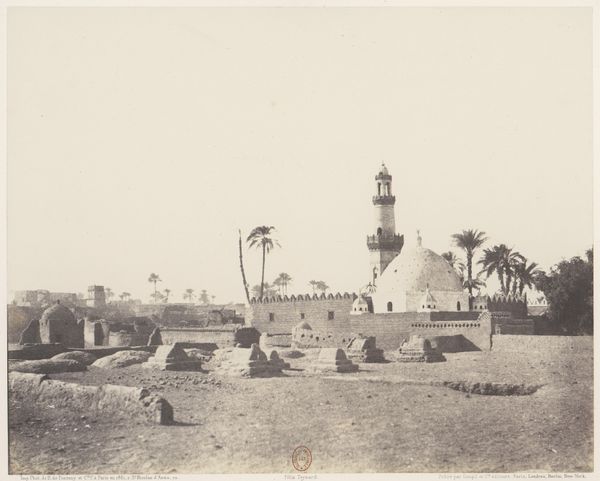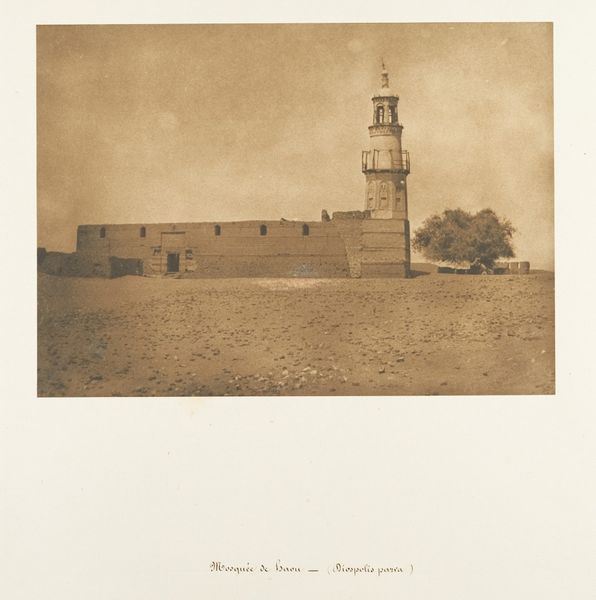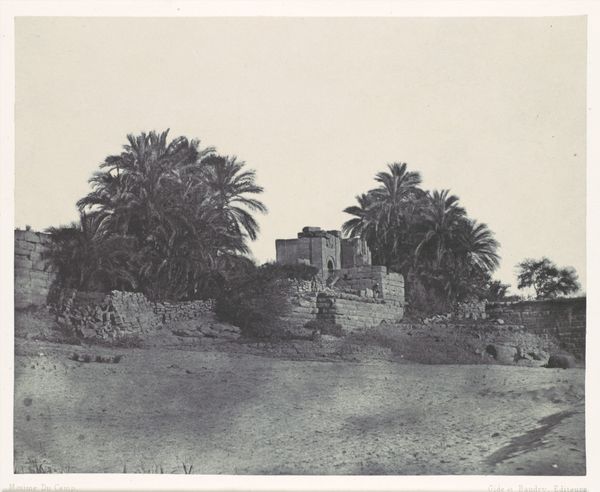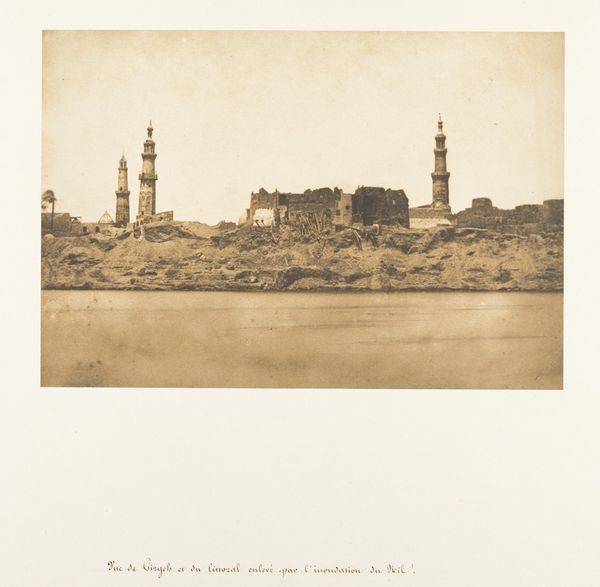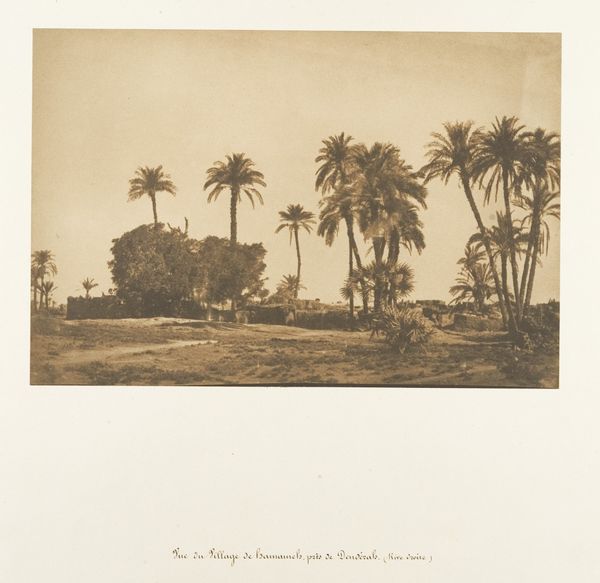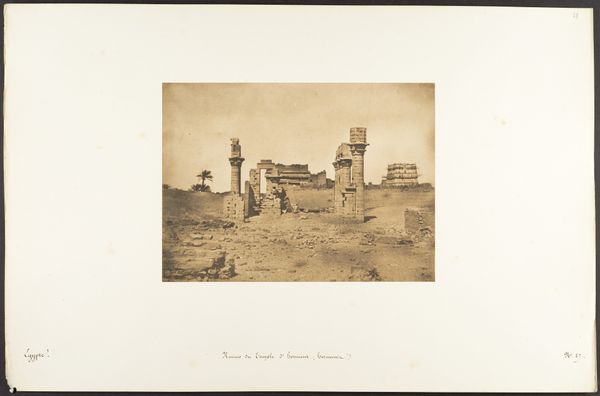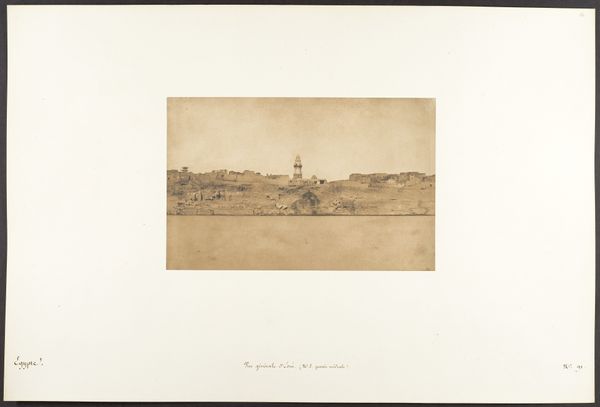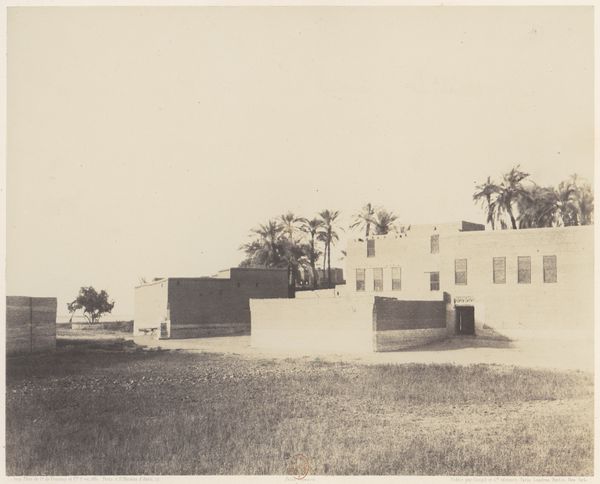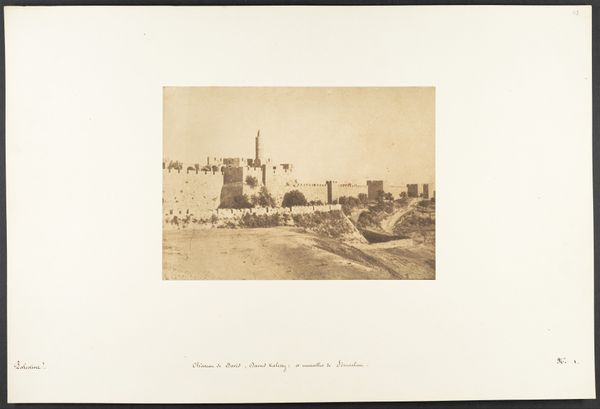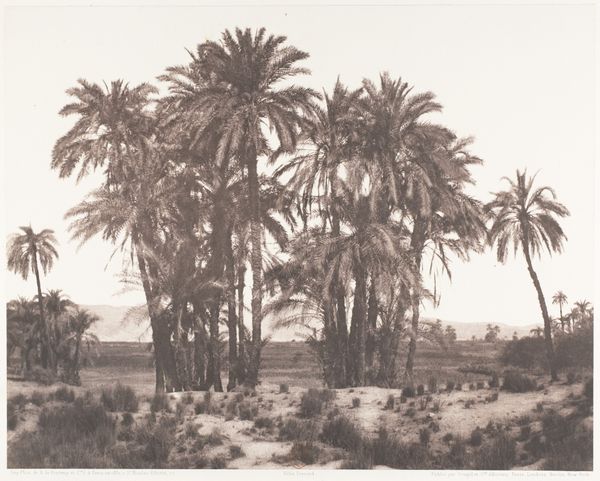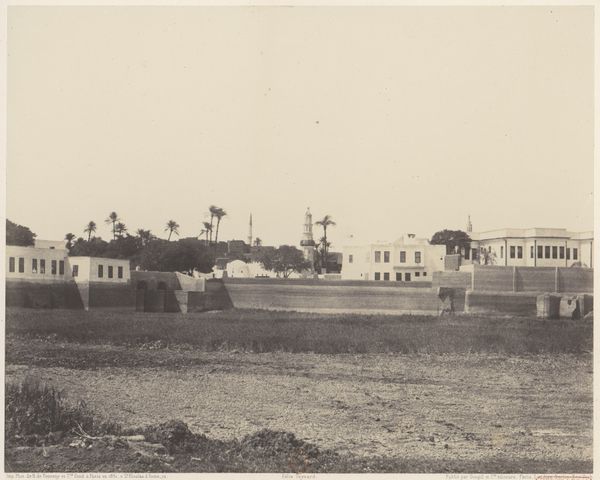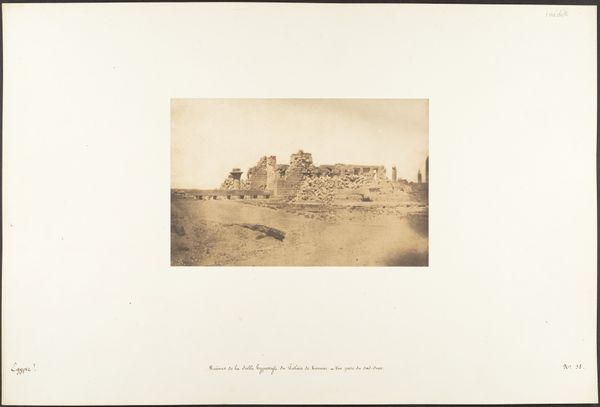
Mosquée d'El-Arif et Tombeau de Mourad-Bey, à Souhadj 1849 - 1850
0:00
0:00
daguerreotype, photography, architecture
#
landscape
#
daguerreotype
#
ancient-egyptian-art
#
photography
#
orientalism
#
architecture
Dimensions: Image: 5 1/8 in. × 8 in. (13 × 20.3 cm) Mount: 12 5/16 × 18 11/16 in. (31.2 × 47.5 cm)
Copyright: Public Domain
Editor: This daguerreotype, "Mosquée d'El-Arif et Tombeau de Mourad-Bey, à Souhadj" by Maxime Du Camp, made around 1850, presents this striking, almost otherworldly view of Egyptian architecture. It feels incredibly still and timeless to me. What do you see in this piece? Curator: The immediate impact lies in the contrasting forms: the solid geometric shapes of the mosque and tomb against the natural, almost dreamlike backdrop of palm trees and hazy sky. It's a study in cultural memory being imprinted onto the physical landscape. Do you sense any inherent power dynamics at play? Editor: Well, the composition emphasizes the buildings, giving them importance. Are you suggesting this emphasis reflects a colonial gaze, maybe romanticizing the "Orient"? Curator: Precisely. The image perpetuates the then-contemporary Orientalist perspective. The photographer chose to present these structures, signifiers of power and religious devotion, for a Western audience hungry for the exotic. Think about how photography itself, at this stage, was viewed. Editor: A cutting-edge technology used to document "other" cultures, making them available for consumption. Curator: And, in a way, reshaping their symbolic meaning. Notice how the architectural details, while visible, seem almost softened by the photographic process? This softens the perceived "threat" of a different culture. Does that change how you see the photo's intentions? Editor: It does. I hadn't thought about how the medium itself contributes to the overall message, transforming what might have been seen as powerful symbols into something more palatable. Curator: Ultimately, this daguerreotype, beyond its architectural subject, speaks volumes about the West's construction of the East, filtered through the lens of early photography. Editor: That's a fascinating perspective; I see this image in a completely new light now. Thanks so much.
Comments
No comments
Be the first to comment and join the conversation on the ultimate creative platform.
